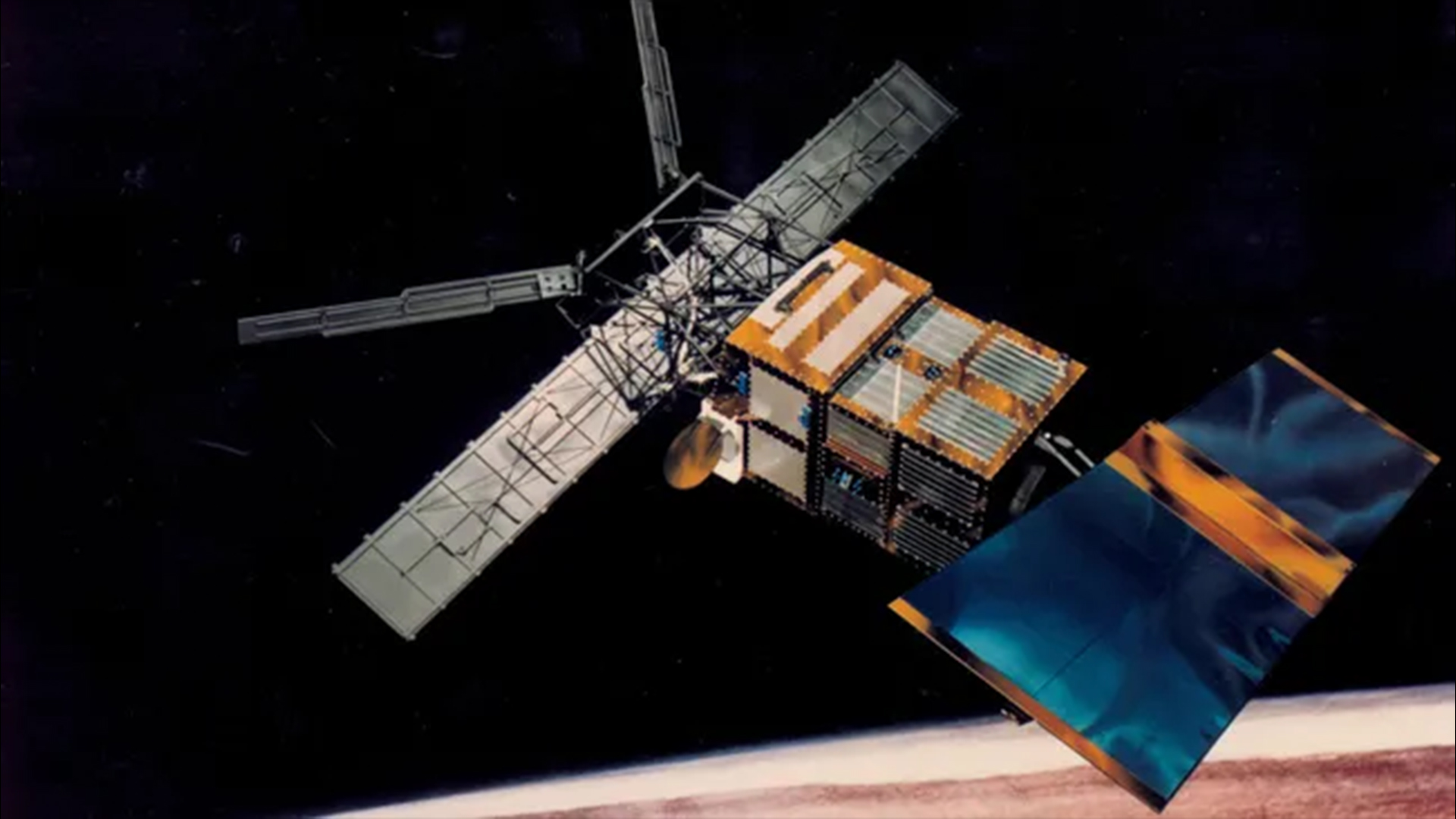5,000-pound European satellite burns up over Pacific Ocean after 30 years in orbit
Europe's ERS-2 climate satellite has burnt up over the Pacific Ocean in an uncontrolled reentry after 30 years in orbit. No damage from falling debris has been reported.

A defunct, 5,050-pound (2,290 kilograms) satellite has tumbled uncontrollably back to Earth after spending three decades in space.
After slowly falling to Earth for more than 12 years, the European Space Agency's (ESA) ERS-2 satellite reentered Earth's atmosphere at 12:17 p.m. ET (5:17 p.m. GMT) on Wednesday, Feb. 21, burning up over a remote patch of the North Pacific Ocean roughly halfway between Alaska and Hawaii, according to ESA. No damage to property has been reported, and it is unclear if any debris survived the fiery plunge through the atmosphere.
The dead satellite — which studied Earth's climate from its launch in 1995 until it was retired in 2011 — is one of hundreds of pieces of space debris that will fall back to Earth this year. Most pieces of space debris that reenter Earth's atmosphere are smaller than 3.2 feet (1 meter) across, according to ESA; however, even large objects like ERS-2 pose virtually no risk to people or property on the ground.
"The risks associated with satellite re-entries are very low," ESA officials wrote in a Feb. 15 update. Because most of Earth's surface is covered in water or is otherwise uninhabited, the odds of getting hit with falling space debris are vanishingly slim; those odds are about 10 million times smaller than the annual risk of getting hit by lightning, ESA previously said.
Related: Should we really be worried about China's uncontrolled rocket booster reentries?
ERS-2's journey back to Earth began with an intentional deorbiting maneuver in 2011. The defunct satellite fired its remaining fuel to lower itself from its previous altitude of 488 miles (785 kilometers) to 356 miles (573 km) above Earth, bringing it out of the path of operational satellites and increasing its chances of leaving orbit.
This descent was slow at first, but in January of this year, it sped up dramatically, with the satellite falling at speeds above 6 miles (10 km) per day.
Get the world’s most fascinating discoveries delivered straight to your inbox.
In its heyday, ERS-2 was the most advanced Earth-observation satellite ever launched by ESA. Packed with sensors to monitor our planet, it provided scientists with crucial data on our warming climate.
"It has provided us with new insights on our planet, the chemistry of our atmosphere, the behavior of our oceans, and the effects of humankind's activity on our environment — creating new opportunities for scientific research and applications," Mirko Albani, head of ESA's Heritage Space Programme, said in a statement.
The ESA satellite is just one of many deorbiting pieces of space junk that have made headlines in recent years. Four of China's Long March 5B boosters (the workhorse of the country's growing space program) fell to Earth between 2020 and 2022, raining debris down on the Ivory Coast, Borneo and the Indian Ocean. In December 2023, another Long March booster crash-landed near a civilian's home in China's Guangxi region.
And in 2021 and 2022, debris from falling SpaceX rockets smashed into a farm in Washington state and landed on a sheep farm in Australia.
Space agencies try to keep tabs on the more than 30,000 largest pieces of this junk, but many others are simply too small to monitor.
Space junk isn't just a problem when it falls on us, either. Researchers have found that the more than 9,300 tons (8,440 metric tons) of space objects orbiting Earth — including inoperative satellites and chunks of spent rocket stages — increase the overall brightness of the night sky by more than 10% over large parts of the planet, creating ambient light pollution that makes distant space phenomena harder to detect. These objects also pose a threat to the International Space Station and other crewed spacecraft.
Related: An astronomer's lament: SpaceX 'megaconstellations' are ruining space exploration for everyone
Scientists have proposed multiple ways of tidying Earth's skies, such as gathering junk in nets, collecting it with clawed robots, or firing a half-mile-long (0.8 km) tether from another spacecraft to grab it.

Ben Turner is a U.K. based writer and editor at Live Science. He covers physics and astronomy, tech and climate change. He graduated from University College London with a degree in particle physics before training as a journalist. When he's not writing, Ben enjoys reading literature, playing the guitar and embarrassing himself with chess.


